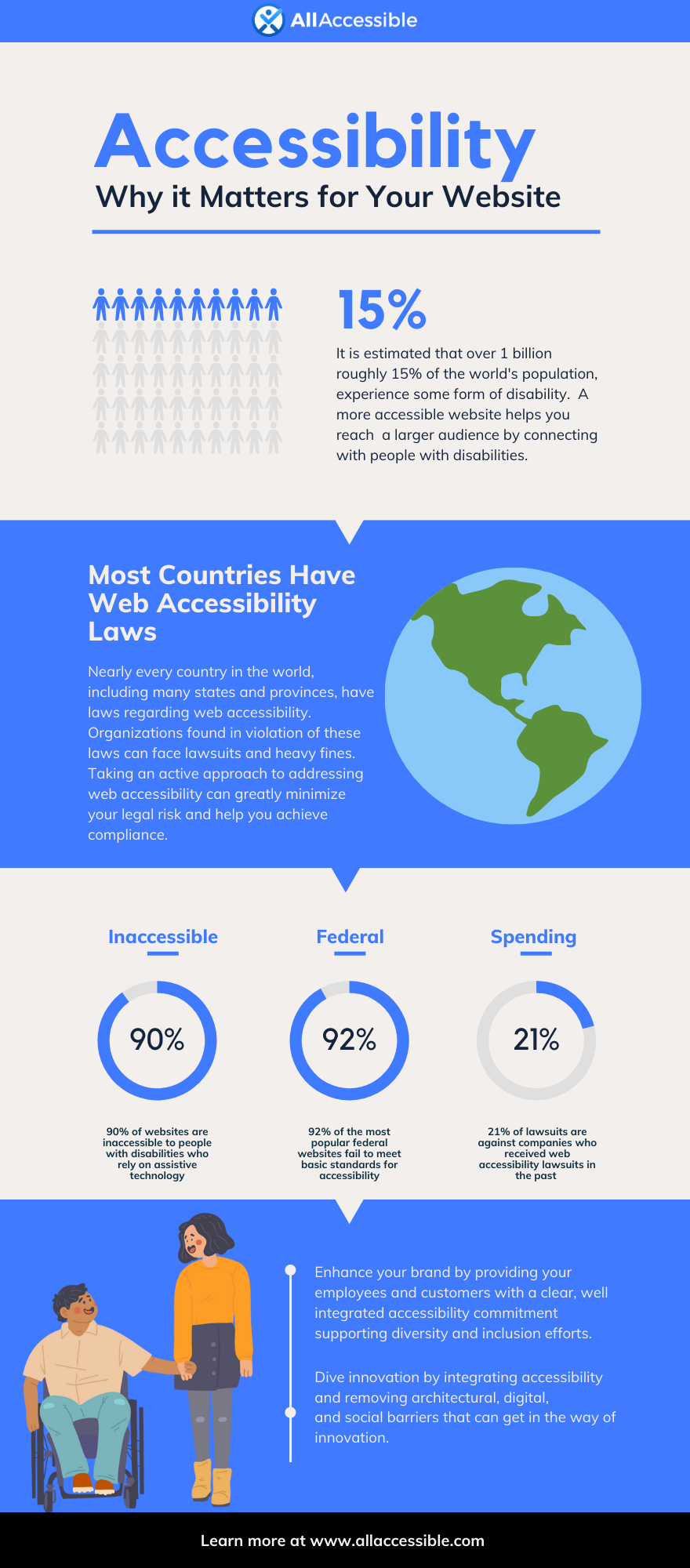The landscape of the web is continually evolving, bringing new trends and best practices to light. One such trend that has significantly grown in importance in recent years, and rightly so, is website accessibility. Making the internet inclusive for all users, regardless of their abilities, is not just a moral responsibility, but it also benefits businesses by improving their online visibility, search engine ranking, and overall reputation. In this article, we delve deeper into the crucial role of website accessibility in web development and how it can drive your online success in 2023.
Website Accessibility: An Overview
Website accessibility refers to the practice of making a website usable for all, including those with visual, auditory, motor, or cognitive disabilities. Web Content Accessibility Guidelines (WCAG) set by the World Wide Web Consortium (W3C) provide the international standard for web accessibility, and ensuring your website aligns with these standards will make your digital content more accessible to a broader range of audiences.
According to the World Health Organization, more than one billion people worldwide have some form of disability, and they face significant barriers to accessing digital content.
Key Elements of Website Accessibility
Website accessibility involves a wide range of elements, including design, coding, content, and user experience. Here are some of the key elements to consider when creating an accessible website:
-
Design: The design of your website plays a crucial role in its accessibility. You should use high-contrast colors and clear fonts that are easy to read. You should also avoid using flashy or distracting graphics, animations, or videos that can cause seizures or sensory overload.
-
Navigation: The navigation of your website should be simple and intuitive, with clear labels and headings that make it easy for users to find what they are looking for. You should also provide alternative navigation options, such as keyboard shortcuts, for users who cannot use a mouse.
-
Content: The content of your website should be written in clear and simple language, with short sentences and paragraphs. You should also provide alternative formats for users who cannot read standard text, such as audio or video transcripts.
-
Multimedia: Images, videos, and audio files should be provided with alternative text descriptions or captions that convey the content to users who cannot see or hear them.
-
Forms and Input Fields: Forms and input fields should be designed to be accessible to users with disabilities, such as by providing clear labels and instructions, using logical tab order, and allowing users to navigate and complete the form using a keyboard.
-
Accessibility Tools: You can also provide accessibility tools on your website, such as text-to-speech software or screen readers, that can help users with disabilities access and use your content.

The Business Benefits of Website Accessibility
- Improved SEO: Accessible websites are favored by search engines. Elements such as alt text, captions, semantic HTML are recognized by search engine crawlers, leading to improved website visibility and SEO ranking. Semantic HTML elements provide information about the type of content contained within them, helping search engine crawlers understand the context of your content better.
<header> <h1>Page Title</h1> </header> <nav> <a href="#">Link</a> </nav> <main> <article> <p>Main Content</p> </article> </main> <footer> <p>Copyright Information</p> </footer>
-
Increased Audience Reach: By making your website accessible, you cater to a wider audience that's often overlooked. The broader your potential customer base, the more traffic and conversions you're likely to see.
-
Enhanced Brand Reputation: An accessible website signals your commitment to inclusivity and equality, improving your reputation and attracting more users.
Implementing Website Accessibility: Practical Steps and Examples
- Alt Text for Images: Descriptive alt text aids visually impaired users and provides context to search engine crawlers, improving your website's SEO.
<img src="image.jpg" alt="A group of people in a meeting" />
- Accessible Forms: Accessible forms, with clear, concise labels, are easier to navigate, especially for users with cognitive or motor impairments.
<label for="name">Name:</label> <input type="text" id="name" name="name" />
-
Keyboard Navigation: Keyboard navigation is crucial for users with mobility issues and is another positive signal for search engines. Ensure that all links, buttons, and form inputs can be accessed using the Tab key and activated using the Enter key.
-
Contrast and Font Sizes: Implement sufficient contrast between your text and background and make your font sizes adjustable. This aids users with visual impairments and provides a comfortable reading experience for all.
body { font-size: 16px; color: #444; background-color: #FFF; }
Conclusion
Website accessibility is no longer an optional element in web development. It's an essential strategy to improve your online visibility, user experience, and overall brand reputation. By understanding and implementing accessibility in your web development process, you contribute to making the web a more inclusive space for all users.